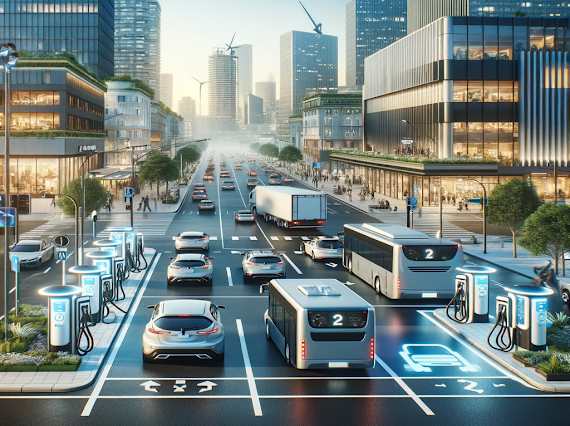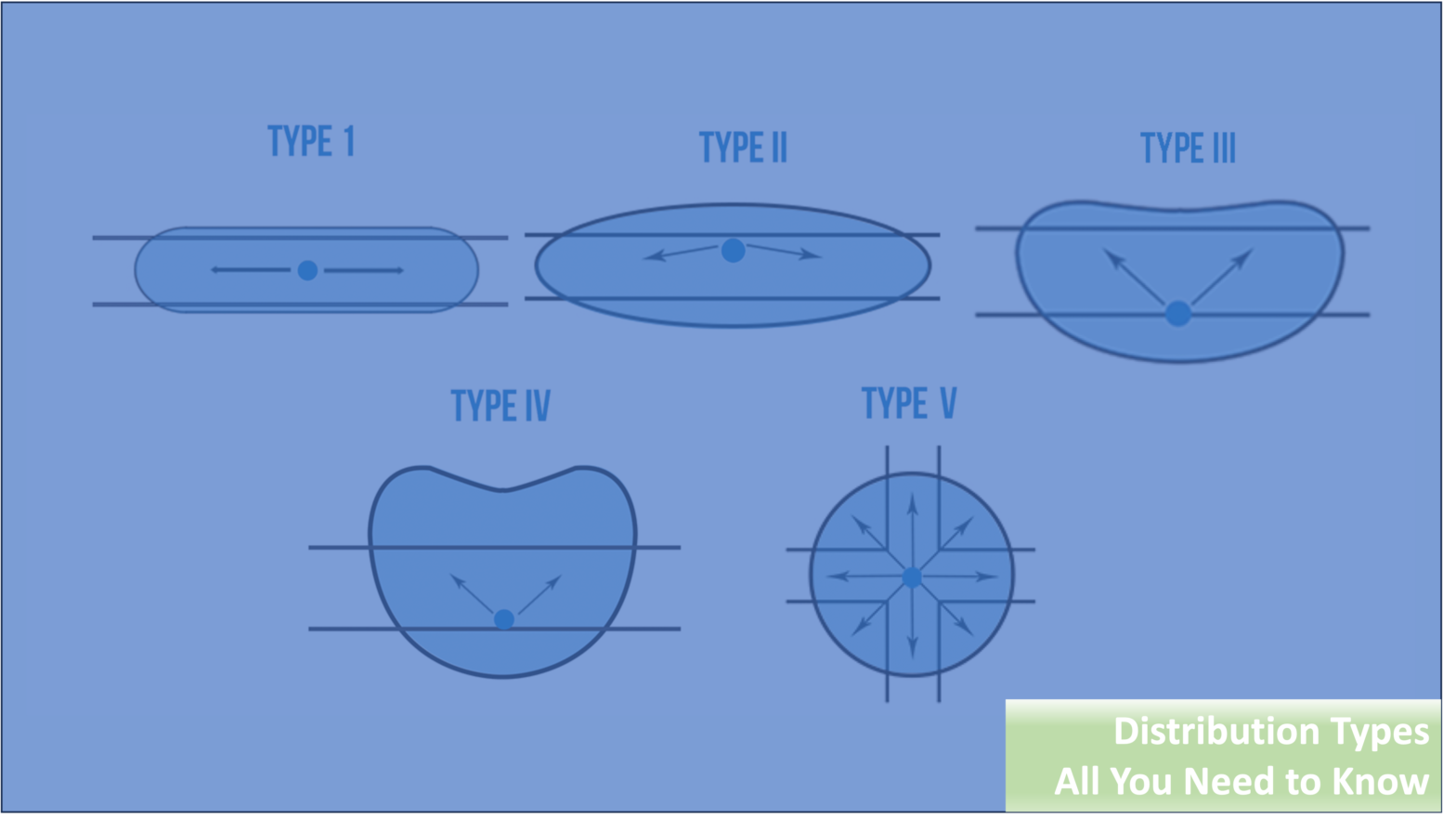On a basic level, the operational goals of your restaurant include reducing energy consumption and boosting company revenue. The key to achieving these goals lies in harnessing the power of data to optimize your restaurant operations, thereby ensuring a quicker return on investment.
Although there are thousands of potential data points that can be used for implementing energy management in restaurants and ensure that HVAC, refrigeration, lighting, water, and food preparation systems are functioning properly, your focus should primarily be on the food you’re serving. That’s where EnergyManager comes in – to take care of your energy consumption and management.
With our established record in serving both traditional and quick-service restaurant enterprises, we understand your facility needs, ensuring the shortest path to positive bottom-line results.
Table of contents
- EnergyManager Restaurant Energy Management Solutions: Profit from Day One
- What is an Energy Management System?
- Unique Aspects of Restaurant Energy Management
- How does it work?
- Why Do I Need an Energy Management Solution?
- Who Benefits from an Energy Management System
- Where are the opportunities for saving money?
- Modeling the Savings
- When should the customer anticipate seeing savings?
- Conclusion
- EnergyManager FAQ’s
EnergyManager Restaurant Energy Management Solutions: Profit from Day One
Our restaurant clientele have seen impressive outcomes, with an average payback period of under 1.5 years, a five-year ROI of 235%, and a 13% reduction in kilowatt-hour usage.
EnergyManager can help you lower operating expenses across your multi-site restaurant locations in North America, using IoT facility management technology.
What is an Energy Management System?
EnergyManager energy management was designed specifically for quick service restaurants, casual dining restaurants, convenience stores, and small box retail. The unique needs of these types of businesses were overlooked and under-served with traditional building management systems of the past.
What was needed to support these businesses was an affordable and adaptable solution delivering energy efficiency and control that saves energy and money. Some businesses want to engage in “green” technology and it makes even more sense when the return on investment fuels your momentum to be more energy conscious.
Unique Aspects of Restaurant Energy Management
Understanding the intricate, fast-paced components that keep a dining establishment operational is our strength, and we are committed to earning your trust. We recognize that monitoring the comfort of your kitchen goes beyond merely managing HVAC systems. Balancing humidity levels, regulating makeup air systems, and ensuring the correct functioning of exhaust fans are all critical for the health and safety of both your staff and guests.
EnergyManager recognizes the importance of monitoring the activities of your refrigerators and freezers, providing timely alerts to prevent the cost of replacing their contents. While you need to oversee kitchen loads such as proofers, fryers, and ovens for further vacant load reduction, we understand that managing dining rooms requires different strategies from managing kitchens. In essence, we know your needs and your restaurants.
Experience zero friction, fast deployment, and proven results with EnergyManager.
Historically, energy has been viewed as an “uncontrollable” expenditure in most food service businesses. Aside from lighting, the majority of energy usage in restaurants and similar enterprises often goes unnoticed. This unseen energy use can often be pricier, particularly in the context of restaurant operations. Energy frequently falls among the top three to five expenditures for a dining establishment. The hurdle has been that there have been minimal resources available to mitigate this cost effectively.
However, the positive development is that efficient and comprehensive energy management technologies are now becoming accessible. These technologies aid in regulating, pinpointing, and eliminating excessive and unnecessary energy use, thereby reducing operating costs and enhancing profitability for restaurant owners and other small-scale commercial facilities. The latest energy management systems enable remote control of HVAC, acquire in-depth, real-time data from each energy-consuming device, and provide smart, timely guidance on discovering and exploiting the most lucrative energy saving opportunities. These systems might also offer features like refrigeration temperature monitoring (crucial for food safety), water and gas monitoring, and lighting automation, which further amplify the benefits an energy management system can offer.
Although these technologies hold a lot of promise, several owners and operators may recount experiences with energy-related technologies that proved to be either overhyped or outright failures. Based on our experiences, to steer clear of disappointing outcomes and concentrate on the positive aspects, one needs to gain a better understanding of these technologies, their value to an enterprise, and how they can be efficiently incorporated to boost a business’s profitability. To aid in this process, three critical questions need to be addressed before initiating a new energy management system project:
- Who should be actively involved in the use of these systems?
- Where do the opportunities for cost saving lie?
- When can the customer anticipate realizing savings?
How does it work?
EnergyManager provides control and real-time monitoring for more than HVAC and lighting and is capable of integrating refrigeration controls and temperature into a comprehensive energy management solution. If necessary, EnergyManager can offer stand-alone system control and data reporting.
The most robust solution integrates energy operations control allowing remote access and multiple users varied levels of reporting. An effective energy management solution will improve control and decision capability to better manage and reduce monthly energy expense.
Why Do I Need an Energy Management Solution?
Energywise Solutions believes that restaurants are an important part of our community. Energywise Solutions wants to contribute to their success by providing the ultimate energy management experience. Not only does EnergyManager save energy, but it also improves equipment longevity and reduces monthly expenses—ultimately putting more money in owners’ pockets.
Who Benefits from an Energy Management System
The value of an energy management system can be appreciated across the entire organizational structure, making it essential to involve different groups in its utilization for maximum benefit.
Finance/Owner
As an energy management system can shed light on the intricate details and benchmarks of one of the top operating costs for restaurants, it is crucial to involve the finance department in its operation. Often, the primary internal advocate of an energy management system is the CFO or the franchise owner, given that one of the system’s primary benefits is an improvement in the company’s bottom line.
Managers/Operations
Most of the savings yielded by an energy management system come from adjustments to processes and operations. Therefore, it’s vital to engage operational managers who have the authority to establish policies and procedures and manage the staff operating significant energy-consuming devices. Specifically, it’s important that both the person responsible for implementing the operational improvements, and their direct supervisor, are involved in using the system. Hence, both regional and store managers should have a part in this. Furthermore, success is typically thwarted if those at the organization’s highest level do not make it evident that the initiative is a priority.
Systems/Facilities
Lastly, anyone in the organization accountable for facilities or equipment management should be included in the project. The energy management system can aid in monitoring crucial equipment performance and offer the necessary data to make informed decisions about equipment maintenance and upgrade programs.
Where are the opportunities for saving money?
An energy management system can be a highly effective tool for pinpointing and eliminating areas of excessive energy expenditure. There are several categories of wasteful consumption where the platform can make a significant impact.
Off-hours consumption
In a standard restaurant operation, the “off-hours” period can present opportunities for reducing excessive energy expenditure. It’s not uncommon for high-cost loads, like make-up air and exhaust fans, to be left running all night when the restaurant is closed. This could be due to inexperienced staff or inadequate training on all aspects of restaurant operations. Managers often have various competing demands on their attention. And sometimes, people simply forget. Inefficient off-hours management of even a few devices in a restaurant can lead to thousands of dollars in lost profits annually per store.
A contemporary energy management system can offer insight into energy consumption patterns, calculate the costs of running equipment during off-hours to underscore the extent of the waste, and send alerts to management when equipment has been left running for too long or is switched on too early. By providing this level of transparency into off-hours consumption, a modern energy management system can greatly assist in the implementation of solid operational practices that ensure equipment is only operating when necessary.
Management of Equipment Use Relative to Business Volume
Much like off-hours energy consumption, several pieces of energy-intensive equipment in a restaurant’s kitchen—like heat lamps, toasters, and Panini presses—could be adjusted or switched off during less busy periods. An energy management system can help assess consumption patterns and pinpoint the most cost-effective pieces of equipment to manage during slow times throughout the day.
Inefficient HVAC and Refrigeration Equipment
A study of commercial HVAC equipment indicated that most often, HVAC equipment isn’t operating at peak efficiency due to issues with various components, including:
- Refrigerant circuit
- Economizer
- Airflow
- Thermostat
- Sensors
An energy management system can uncover issues with HVAC and refrigeration systems by identifying troublesome operating patterns, such as compressor short-cycling, continuous compressor operation, compressor failure, and by detecting anomalies in anticipated supply and return duct air temperatures.
Inefficient Programming of Thermostats
Installation of programmable thermostats and consistent management of different heating and cooling set points throughout each day and across seasons is the most cost-effective approach to automate energy savings. Heating and cooling expenses are typically a restaurant’s biggest energy cost, and programmable thermostats are considerably cheaper than any other form of energy automation.
Regrettably, many restaurants use their programmable thermostats the same way many people use them at home: they don’t program them. Programming the thermostat can be a tedious task, making it challenging to implement schedule changes or seasonal adjustments. Setpoints are often overridden, leading to a tug-of-war between staff’s preferred temperature settings and those desired by customers. The result is HVAC equipment generally running harder and longer than necessary, squandering valuable profits.
Training staff on how to use programmable thermostats and having a thermostat that is user-friendly (for example, connected to the internet for remote control) can significantly optimize the use of heating and cooling systems, achieving a balance between comfort and energy savings.
Early Detection of Equipment Issues
Equipment can divulge much about its performance through its energy consumption patterns. For instance, a broken fan belt or a blocked vent in an exhaust system can cause equipment to use significantly more or significantly less energy than its designed consumption. An energy management system can be set up to automatically identify deviations in consumption patterns and proactively dispatch text and email alerts to management. In this way, an energy management system’s ongoing analysis can help avert “black swan” events—severe failures of critical equipment.
Management of Energy Demand Spikes
Most commercial properties, including restaurants, experience what are known as “demand charges” from their electric utilities. Demand charges are set during peak electricity consumption periods, usually lasting 15 to 30 minutes. The utility charges based on the extent of the customer’s demand spikes, measured in kilowatts, not kilowatt-hours. The larger the spike, the higher the demand charge. (A more detailed explanation can be found here.)
An energy management system can detect surges in electricity consumption and either send out warnings in time for restaurant managers to take action to decrease the intensity of the spike or, more likely, demonstrate over time what changes could be made daily to systematically reduce the possibility of higher demand charges. For example, managers could lower the thermostat by 2 degrees or turn off their ice machine from 3pm to 4pm during the summer to decrease the restaurant’s total demand during the spike period.
Modeling the Savings
How do these different opportunities translate into potential savings? Below is a model of a typical restaurant with a range of typical expected savings for each category of savings opportunity:
These savings can vary by +/- 50%, which implies a savings range of 8-18% in direct energy savings. These figures don’t account for potential savings in gas consumption brought about by more efficient use of thermostats and better operation of HVAC equipment.
There are additional avenues for savings as well. For example, savings derived from avoided maintenance calls due to remote diagnostics and equipment performance monitoring could contribute another $1,000 annually in direct savings (service call benchmarks hover around $350 per call). While HVAC/R faults necessitate an HVAC technician’s intervention, we’ve found that these issues can be resolved with minimal additional costs to the existing repair and maintenance contract that’s already covered in the first year of the program. Further cost-reducing adjustments to that contract may be possible in subsequent years.
When should the customer anticipate seeing savings?
An energy management system, like any other business tool or system, necessitates some effort for setup, training people to use it, and a time period for transitioning from “new and different” to “the way we do things.” Consequently, the benefits derived from the system accrue over time rather than materializing all at once.
For success, the enhancement of business processes driven by an energy management system should be planned in advance and implemented at a reasonable pace. This is not to suggest that deploying a modern energy management system is difficult—it isn’t. However, expecting a 20% reduction in your next month’s utility bill is an unrealistic expectation that may lead to disappointment. Like any project, some project management is necessary to optimize the benefits available. Below is a sample deployment schedule or project plan for a modern energy management system.
During the initial two months post-installation, the energy management system will collect baseline data detailing energy consumption amounts and patterns for each circuit within a restaurant. This data provides insight into the current state of operations and equipment performance and serves as the basis for identifying potential improvements in these areas.
Also, during this period, all stakeholders involved in the use of the energy management platform should undergo training and start familiarizing themselves with the system.
Months 2-6: Fine-Tuning Daily Operations
By examining energy consumption patterns, management can identify low-hanging fruit opportunities to reclaim lost profits through relatively simple operational changes. These opportunities might include scrutinizing off-hours energy consumption and implementing corrective measures to ensure equipment is operational only when necessary.
Early savings opportunities can also be found in updating thermostat programming for more efficient use of HVAC systems.
For organizations managing a portfolio of restaurants, the baseline data facilitates benchmarking of their facilities. Which restaurants are performing best in terms of energy use? Where are the worst practices being observed? Which functional areas (e.g., HVAC, refrigeration, lighting, etc.) are contributing most to the problem? Through benchmarking, management can identify which restaurants offer the greatest potential for savings and focus their efforts accordingly.
To maintain the operational improvements implemented during the early phases of energy management system deployment, restaurant management can introduce energy cost controls. These controls may include establishing or updating opening and closing procedures for each store, determining or reinforcing thermostat temperature set points, and training staff on any changes.
Furthermore, the energy management system can be configured to send email or text alerts to reinforce proper operating hours for critical equipment.
Months 4-6: Identifying Underperforming Equipment
Simultaneously with the implementation of improved energy cost controls and operational improvements, management can identify problematic equipment during this period. An energy management system can flag equipment exhibiting problematic energy consumption patterns (e.g., a roof-top unit short-cycling, or a refrigeration compressor running continuously) and alert the facilities/maintenance team.
Armed with this information, the facilities/maintenance team can modify equipment maintenance schedules and create equipment alerts to spotlight underperforming assets.
Month 7: Project Review
It’s very beneficial to schedule a review of the energy management system implementation during the seventh month of deployment. This meeting ensures all necessary management feedback loops are in place, allows the team to celebrate successes, and identifies areas needing improvement.
Months 9-12: Assess Equipment Upgrades
Certain energy management systems can calculate the exact cost of running a piece of equipment. Using the data gathered during the first six months of implementation, is there a case for upgrading equipment to more energy-efficient models? What is the real-world performance of the EnergySTAR refrigeration equipment, HVAC equipment, and lighting in which you’ve already invested? Just how costly is that old, inefficient equipment that you know needs to be replaced sooner or later? Which equipment should you use in your soon-to-be-constructed new restaurant?
By providing actual run-time costs, an energy management system can give management the data it needs to tackle these questions. Rather than projecting the ROI for replacing a piece of equipment using estimates of its energy consumption, you can now use the real facts for how much energy the equipment uses now, reducing the risk of not achieving your projected ROI.
Months 7 – Onward: Ongoing Daily Operations & Equipment Performance Management
Studies have shown that without active energy management, buildings can lose up to 80% of energy efficiency gains achieved via audits or retro-commissioning within the first two years after efficiency measures have been implemented. This so-called “energy drift” can be prevented by incorporating an energy management system into ongoing operational practices in restaurants. Just as restaurants have systems for tracking inventory and labor costs, it is now possible to track and improve energy cost performance.
In addition to ensuring all the operational and equipment improvements implemented during the first 6 months continue to be effective, restaurant management teams should consider implementing longer lead-time changes in broader operating policies that can save energy. Examples of this type of business optimization include water vs. chemical sanitation, the sequence of food preparation that determines how much food warming is required, or the re-balancing of HVAC systems.
Moreover, it is crucial to validate the savings derived from new maintenance strategies or capital equipment upgrades. Is the new equipment performing as per its specifications? Are the equipment upgrades delivering the expected savings? Are the service providers ensuring improved maintenance and hence better equipment performance?
Finally, an energy management system can provide continuous analysis that can help prevent disastrous failures of crucial equipment through early detection of abnormal energy consumption patterns, which can often be an indication of equipment issues.
Conclusion
Before implementing an energy management system, it’s essential that you devise a plan that clearly delineates who will be involved in using the system, how the tool will be leveraged to save money, and when you should expect to see benefits from the system’s usage.
With a bit of strategic planning, an energy management platform can be an invaluable tool for increasing profits in restaurants by reducing energy consumption and enhancing the performance of vital equipment. Additionally, by making visible what has traditionally been an invisible cost for restaurants, it’s finally possible to move energy from an “uncontrollable” cost to a “controllable” cost.
Interested in learning more about how EnergyManager can safeguard your profits?
EnergyManager FAQ’s
A. The cost of an EnergyManager system by Energywise Solutions can range from $100’s to a few $1000, depending upon the number of equipment units being monitored and controlled. There is typically a small monthly fee for the cloud Software access that can range from $20-$100/month that varies depending on the equipment utilized at your location.
A. EnergyManager’s Managed Services program offers a proactive approach to energy management. We enter into contracts as operational partners, providing a simple interface for early and remote equipment diagnostics, active temperature monitoring and alarming for refrigeration equipment, and energy conservation through the automation and control of critical equipment. Beyond the system, our 24/7 Client Success Manager actively reviews equipment run-times, alarms, and the system to ensure you’re reducing costs, repairing equipment as necessary, and implementing better operational procedures.
A. We don’t require financing for the EnergyManager equipment or services. We offer two different plans:
1) Monthly Subscription Option – all equipment, installation and services are bundled into a monthly subscription fee.
2) Equipment Lease Option – some clients opt to use our equipment lease program to reduce the monthly costs and take ownership of the equipment at lease end.
A. Energy savings will depend on various factors such as your business volume, weather, and human behavior. Electric bill reductions can range from 8% to 40% beginning from the first month the equipment is installed. However, there are many variables that affect your electric bill. Our system provides real data about the duration the equipment is running and the total energy you are consuming.
A. You’ll begin saving right away. The kilowatt conservation starts immediately upon installation and contributes to energy savings.
A. The return on investment (ROI) timeline may vary from business to business, but most of our customers observe a difference in their energy consumption within the first month.
A. Energywise Solutions collaborates with national and local licensed electrical contractors for system installation.
A. No, there will be no disruption to your business operations. The system’s modular equipment is preconfigured and preprogrammed, ready for installation. Your only task is to ensure that the equipment is accessible.
A. While we don’t offer specific guarantees due to the various factors unique to each business, we are committed to helping you realize the full value of the system and ensuring your satisfaction.
A. The energy management system requires very little time to manage. Once set, it can be left to function automatically, with any required changes or adjustments easily made through the mobile app or chameleon-cloud.com.
A. Our energy management system offers various benefits, including equipment diagnostics, analytics, active temperature monitoring and alarming, temperature reporting, text and e-mail alerts, equipment failure alarms, and much more!
A. Alarm and alert management can be customized to your preferences. You can assign administrative rights to anyone you choose for receiving notifications and changing program settings. Our Client Success Team also receives your alarms and contacts you to ensure action is taken.
A. The age of your locations and equipment does not hinder the implementation of our energy management system. In fact, older equipment often presents a greater opportunity for overall energy savings when controlled by the system.
A.Yes, many utility companies offer rebates for our system, recognizing it as an effective way to reduce energy demand. These incentives are typically available when the solution is purchased as a capital expenditure.







